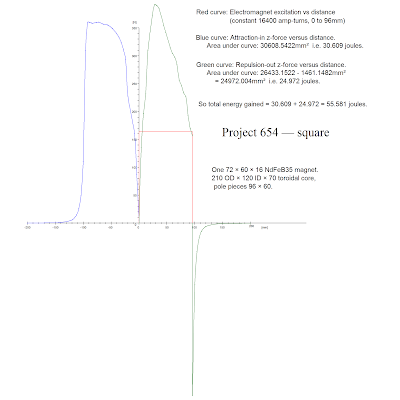Lightworks video "Free Energy — The Race to Zero Point"
US Pat 5625241
Also see http://blog.go-here.nl/4831
More electrical power claimed to be delivered than used
Here are two screenshots from the 2008 Lightworks video "Free Energy — The Race to Zero Point." The first one shows an Energy Research Corporation advertisement. Its introduction states "In controlled laboratory tests, the ERC's new motor/generator technology delivers more electrical power than it uses. This incredible breakthrough could one day make your electric bill a thing of the past."
The second screenshot shows a closeup of this "carousel" motor/generator, invented by Russell R. Chapman, Harold E. Ewing and principal inventor David R. Porter of Galtech Semiconductor Materials Corporation. It was claimed to be particularly suitable for high speed/high frequency operation.
Energy Research Corporation was a wholly owned subsidiary of Galtech Semiconductor Materials Corporation, which was itself renamed Real Data Inc. in 2013.
This full video has been posted at https://www.youtube.com/watch?v=PfEbCBcddQw. The section concerning David Porter and the carousel motor/generator starts at 59:54.
A strange claim
I don't propose to comment on the Galtech carousel motor/generator in detail. I'll just note one very strange claim made by David Porter, that it takes energy from an ongoing loss of strength of the permanent magnets incorporated in it.
Porter is not the only inventor to make such a claim. I'll examine it more closely in the post after next.






